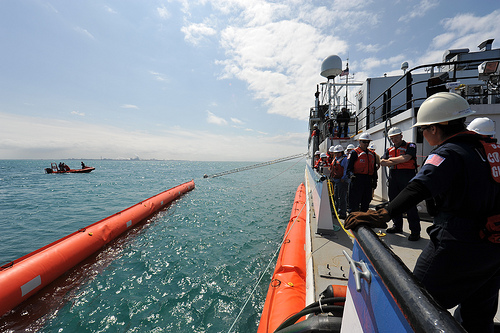Article 6 – Notification and Response

Through the Notification and Response Article of the 2012 Great Lakes Water Quality Agreement, Canada and the United States have committed to the following notification and response procedures:
- If Canada or the United States becomes aware of a pollution incident, or the imminent threat of a pollution incident, that could be of joint concern to both countries, it shall notify the other in accordance with the requirements set out in the Canada‑United States Joint Inland Pollution Contingency Plan and the Canada‑United States Joint Marine Pollution Contingency Plan;
- In the United States, emergency spills and releases into the Waters of the Great Lakes should be reported directly to the National Response Center at (800) 424-8802. In Canada, emergency spills and releases into the Waters of the Great Lakes should be reported directly to the Canadian Coast Guard, Central and Arctic at 1-800-265-0237. Such reports to these call centers will immediately trigger the inland or marine contingency plan, as appropriate.
- Canada and the United States shall continue to implement the CANUSLAK Annex of the Canada-United States Joint Marine Pollution Contingency Plan, as amended, or any successor instrument, to provide a coordinated binational approach for planning and preparedness in response to pollution incidents;
- Canada and the United States shall notify each other, through the Great Lakes Executive Committee, of planned activities that could lead to a pollution incident or that could have a significant cumulative impact on the Waters of the Great Lakes, such as:
- the storage and transfer of nuclear waste or radioactive materials;
- mining and mining related activities;
- oil and gas pipelines;
- oil and gas drilling;
- refineries; power plants;
- nuclear facilities;
- hazardous waste storage;
- treatment or disposal facilities; and
- other categories of activities identified by the two countries.
- A record of past Article 6(c) notifications can be found at: https://binational.net/dev/agreement/article-6-notification-and-response/record-of-canadian-and-u-s-notifications-under-the-2012-glwqa/